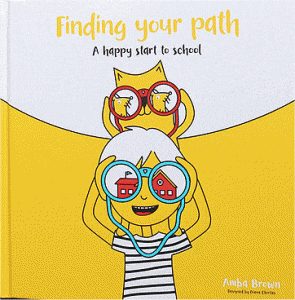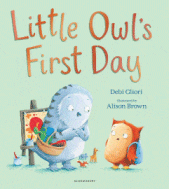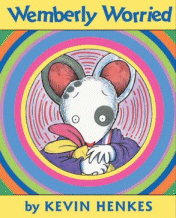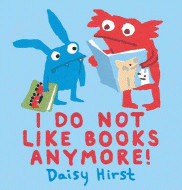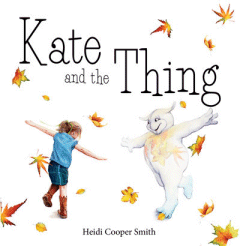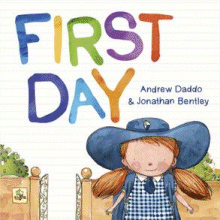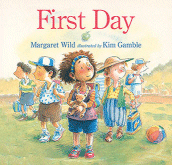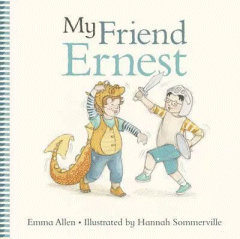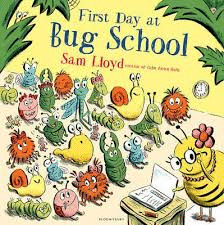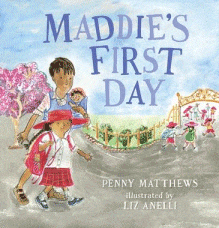
Maddie’s First Day
Maddie’s First Day
Penny Matthews
Liz Anelli
Walker, 2018
32pp., hbk., RRP $A24.99
9781925381351
Today is the day that Maddie is going to start big school. She has her uniform ready, including the big red hat she likes best; her backpack has her pencil case, painting smock, lunch box with lots of yummy food and water bottle – and just in case, she has hidden Blanky at the bottom. Before she catches the train to work, Mum plaits her hair and then it’s off with Dad to join the rest of the new children. She feels so grown up that she doesn’t even hold his hand, but once she gets to school and she can’t see her friends Maya or Charlie amongst all the children, she starts to worry and he tummy starts to feel wobbly.
To help her feel better, she takes Blanky out of her backpack just as Maya appears. Maddie’s tummy feels wobblier than ever and it gets worse as the morning goes on, especially when Maya tells Charlie and their new friends Hossein and Henry about Blanky. But then Charlie shares a secret with her…
As the new school year looms there will be many preschoolers like Maddie who are looking forward to being grown up but whose tummies are also a bit wobbly. This is a perfect book to share with them as it works through the little things in Maddie’s day that will be familiar to them, as well as those big feelings of being overwhelmed, nervous and a little bit lost. Anelli has used real schools as the basis for her real-life illustrations so that the youngest readers will recognise the surroundings – the whole story is such a familiar one that the fact that Maddie’s dad is the primary carer and the family is not the typical white middle-class family usually portrayed in such books goes almost without notice.
While this is just one of many stories about a child’s first day at school, the more of them that children hear before the big day, the more relaxed they will be about it. They will understand that all their friends are feeling just the same as they are and there is a lot of comfort to be gained from that. And if taking Blanky or a favourite toy to school makes it easier, then so be it. Let them do it.
